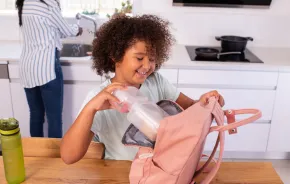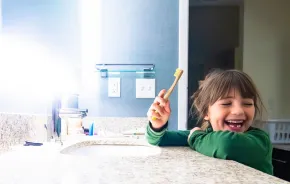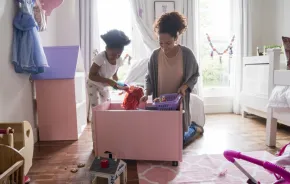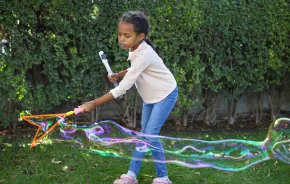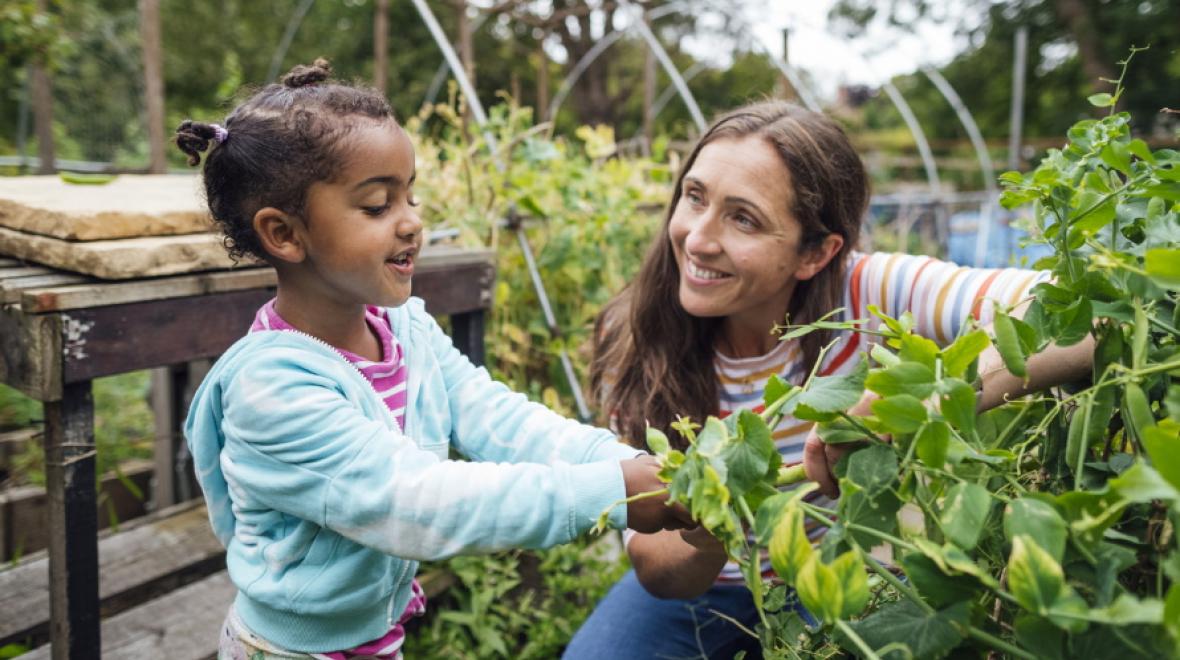
When most people think about growing their own food, they picture a raised-bed vegetable garden in the back or side yard of a suburban home. But believe it or not, an edible family garden can go beyond the backyard. Edibles can be grown as trees and shrubs, or be part of an herbaceous landscape that returns every spring. What's more, you don’t even need a proper backyard to have a successful edible garden! Whether you wish to teach your children about nature and where their food comes from, or you just want to grow some of your own food this year, read on for plenty of tips to help you get started.
Edible gardening considerations
To create a successful edible garden, you’ll want to visualize an outcome. Consider why you are planning a garden. The reason can be anything from providing a nature lesson to the kids to encouraging them to expand their palate, but overall, having a vision for your garden's raison d'être will help keep your ideas in perspective (and your budget in check).
For all the planning and work that goes into planting an edible garden, you want to be sure to choose plants that your family will actually enjoy. One fun way to plan your garden is to include plants that can be eaten while harvesting (or without any preparation), and to include a theme area. For instance, if your kids love berries, then plant extra for grazing. If your family eats a lot of pizza, reserve a section of your garden for growing pizza ingredients (herbs and toppings). If you want to encourage your children to eat specific vegetables, planting and tending them may work to encourage your kids to sample what they grow. But if no one in your family likes turnips, then don’t plant them! Just because something is easy to cultivate does not mean you should bother growing it.
Peter Selkin, a Tacoma father of two, advises edible-garden neophytes to keep expectations appropriately low, and gives a fair warning to parents with younger tots: “Kids are going to dig things up and destroy plants.” If your goal is to spend time in the garden with the family, then you will not be disappointed when this inevitably happens. On the other hand, if you were secretly hoping to sustain your family’s vegetable needs through the winter, you may find yourself quickly disillusioned. Selkin shares this perspective on his family's chief gardening accomplishment: “Our garden was a success because my kid can identify the plants [that our] food comes from.”
Planting your edible garden
You don’t need to plant everything in a typical raised-garden bed. An edible family garden can (and should!) include more than annual vegetables, and there are many creative planting strategies. “Corn can be a temporary privacy fence, and grapevines can become a fort,” suggests Christy Scerra, a certified professional horticulturist and owner of The Urban Gardener. It’s your garden, and the sky’s the limit when it comes to getting creative with your planting. Potatoes can be grown in a trash can, and lettuce could thrive in a recycled rain gutter. You can even grow tomatoes in a hay bale! The more imaginative you are, the more fun you’ll have while gardening as a family. Read our article about container gardening for more ideas and tips.
Getting creative with annuals
There are many edible plants that will continue to grow year after year, including fruit trees, rhubarb and asparagus. Even if you think you don’t have room for a cherry, apple or pear tree, you may find that, with a little ingenuity, you can squeeze one (maybe two) into your plan. Espalier or flat trees don’t take up a lot of space and look nice along a fence. Additionally, these trees are typically self-pollinating (three varieties are grafted onto one tree) so you’ll only need to worry about finding space for one fruit tree.
Fruit trees. In Puget Sound, you can select from apple, pear and cherry tree varieties. If you don’t have a fence to plant your trees alongside, Scerra suggests that you flank your back door with columnar apple trees. Both espalier and columnar trees can also be planted in large containers if mobility is a requirement. If something a little more exotic fits your taste, then consider planting a citrus tree in a pot that you keep inside during the winter. Citrus trees can be used as a fun interest plant — and the blossoms look and smell wonderful!
Berries. If you’re looking to add a few shrubs to your landscape, berry bushes can be an excellent choice. Blueberries display great fall color, and some huckleberry varieties will retain their foliage throughout the seasons. Currant and gooseberry bushes can serve as attractive informal hedges in your landscape, and they also grow well in containers if you have limited space to work with. However, keep in mind that gooseberry bushes do have thorns, so don't plant them near play areas — non-thorny bushes, such as currants, would work better near areas the kids frequent. Overall, berries are great landscape inclusions for kids since they can be eaten as they are picked — talk about on-the-job benefits! Read our article about growing berries for more tips and ideas.
Fresh herbs. Herbs are easy to grow and they can save a lot of money for families that love to cook. According to Scerra, kids enjoy herbs for their sensual stimulation. Let your kids feel the soft fuzzy leaves of sage grown in your garden and teach them how to identify different mints by their square stems. Smell the fresh herbs with your children and ask them what they think — pineapple mint is named that way for a reason! Another aromatic and overlooked herb, culinary lavender, is popular for its easy-to-grow reputation, wonderful scent and gorgeous visual appeal.
Flowers. For those who like a little color in the garden, don’t forget the flowers! Children love all of the bright colors that flowers can offer — not to mention the fact there are many varieties of edible flowers that can be grown in the Puget Sound region. Watch your kids’ eyes light up when you tell them they can actually eat the rose petals and pansies growing in the yard! Edible flowers provide showy appeal lining your raised beds, flanking walkways or frothing out of pots. Use your imagination and sense of color — pansies, nasturtiums, marigolds, violas and more make a colorful addition to any garden-fresh meal or salad. However, it’s also important that you teach your tots that not all flowers are edible — especially if you have younger children. If this is a concern, consider planting your edible flowers in very distinct areas so that they can be aware of the difference.
If you have an existing play area for the kids, consider plantings that can create a sense of fantasy or adventure. Bean teepees are a delightful addition to a child-friendly garden. Sugar snap peas grow well in Puget Sound and kids love to eat them straight off the vine. Corn rows can do double duty in the garden by creating a separation between a play area and an adult zone. Plants that will return year after year such as rhubarb, chives and strawberries can be planted on the path leading to a playhouse, providing color and drama along the way.
According to Scerra, placement of your garden is key. The closer to a water source it is the more successful your garden will be. Additionally, you want your garden close to the door so it does not become neglected — in an out-of-sight, out-of-mind sense. Hillsides are great for fruit trees since once they are established they don’t need a lot of watering.
Long-term garden planning
If you live in a home where you intend to set down roots for a while, start thinking long-term and plan your garden and budget so you don’t have to invest all your time and money the first season. Think about the ages and interests of your children and let your edible garden grow apace with them. Has your son recently developed an interest in forts? Plan and plant a grapevine fort. Plant a fruit tree for each child (if you have the space) as a visual yardstick for how both the child and the tree grow and mature year after year. If they are old enough, let your children pick the tree or type of fruit.
Better your chances for success by selecting plants that grow well in the Northwest and that will also be enjoyed year after year: asparagus, artichokes, grapes, raspberries, fruit trees, blueberries, gooseberries and currants.
Edible garden timeline
Late winter and early spring are the best times to buy most edible plants, as this is when nurseries offer the greatest variety of trees, shrubs, vines, herbaceous perennials and seeds. You will want to start your seeds indoors in late February to early March. Bare-root plants — asparagus, rhubarb, strawberries, grapes, gooseberries, currants and scallion bulbs — are an inexpensive way to start a garden. Mid-February is the time to purchase them — visit the nursery in a timely fashion because they can sell out fast! If fruit trees are part of your plan, bear in mind it will be at least three years before they will bear any fruit. Another thing to note is that you will want to be sure you are indeed purchasing the fruiting and not the ornamental, varieties of trees.
For more information on planning your gardening timeline, you'll find many resources, both books and online. One long-trusted resource is "Growing Vegetables West of the Cascades: The Complete Guide to Organic Gardening" by Steve Solomon. For a localized resource, visit your local nursery. And here's a good overall tip on timing: If you remember to plant your potatoes on St. Patrick’s Day and the rest of your vegetables after Mother's Day (traditionally the last frost), then you should be in good shape.
Remember, too, that a great family edible garden is not created in just one season. Take your time to plan your garden and remember you may want to adjust your design as your children grow. Also, don’t forget to create a budget. It is easy to bankrupt your wallet buying plants and supplies. Preparing and building your garden in phases over several years will allow you to adjust as you and your family learn from the experience.
Anna Petersen is a freelance writer specializing in parenting, gardening, sustainability and community design.
Editor’s note: This article was originally published a few years ago, and updated in March 2021.






